Maragheh the biggest observatory of Middle Age
Parviz Tarikhi
April 2008
The Independent Daily, Bangladesh, Independent Publications Limited, Dhaka, Bangladesh, feature article, 2nd April 2008 issue, Science and Technology section, page 13.
 Dhaka, Wednesday 2 April 2008 / 19 Chaitra 1414 / 24 Rabiul Awal 1429/ Vol 14 No. 8
Dhaka, Wednesday 2 April 2008 / 19 Chaitra 1414 / 24 Rabiul Awal 1429/ Vol 14 No. 8
Maragheh Observatory (Rasad Khaneh in local language, Azerbaijani) is an ancient observatory, which was established in 1259 by Khajeh Nasir al-Din al-Tusi (1201-1274), the remarkable Iranian scientist and astronomer. Rasad Khaneh was once the most prestigious observatory in the world; it still preserves its magnificence and glory on the western hills of Maragheh called Talebkhan Hills.
A considerable archaeological and historical studies as well as groundwork has been made on the remnants of Maragheh Observatory. It is now revealed that the Observatory was a four-story circular stone building of 28 m of diameter constructed in a 340 to 135 m2 citadel-like area. The mural quadrant to observe the positions of the stars and planets was aligned with the meridian, which served as Prime Meridian (reference meridian) for the tables in the Zij-i Ilkhani, an astronomical almanac; nowadays the reference meridian is the one, which passes the Royal Greenwich Observatory in the United Kingdom.
In 1253 AD, the Mongols began their invasion to Persia and the Caucasus. This event, as strange as it may sound, was very beneficial for Khajeh Nasir, who was held captive at Alamout, in Qazvin for many years by the Assassins- a religious clandestine terrorist group ruling in Persia and led by Hassan Sabbah. The Mongolian occupation led to release of Khajeh Nasir and his freedom.
It is said that it was Khajeh Nasir who persuaded Hulaku Khan to continue his attack to Baghdad and destroy the Abbasid Caliphate there. The Khan succeeded in 1258 and afterwards made Khajeh Nasir one of his personal advisors.
Hulaku then made Azerbaijan the centre of his huge state, which was known as Mongolian Ilkhanid Dynasty (Ilkhani means “People’s Khan” in Azerbaijani language). Maragheh, an ancient cultural centre became the first capital that later was changed to Tabriz.
Hulaku Khan believed that much of his military successes were due to the advice of astronomers (who were also astrologers), especially of Khajeh Nasir al-Din al-Tusi. Khan’s advisor, Khajeh Nasir who was a scientist at the same time, benefited Hulaku’s belief in astrology and persuaded him to build an observatory in Maragheh. He convinced Hulaku that he could only guide the destiny of the Mongols if a huge observatory and a library to house enormous volumes of books were constructed. Furthermore, when Khajeh Nasir complained that his astronomical tables are outdated, Hulaku authorised building the observatory in a place of Khajeh Nasir’s choice. According to books such as Rashidi’s Jam-e-ttavarikhe, building of the Rasad Khaneh started in 1259 (657 A.H.). It became operational in 1262 and had various instruments, which was the invention of Khajeh Nasir himself. He also designed other instruments for the Observatory, which was far more than a centre for astronomy. The library of the observatory contained 40,000 books on wide range of scientific topics in addition to astronomy and astrology, while work on mathematics and philosophy were vigorously followed there.
The idea of building Maragheh Observatory has its own specific story as was recorded by the well-known historian, Haji Khalifa, in his book, “A Book about the World”. When Khajeh Nasir proposed the idea of constructing an observatory that was an expensive undertaking as well, the Khan asked Khajeh Nasir, “…why do we need an observatory?” “…is the science about the stars so important that we should spend such a great amount of money?” Khajeh Nasir replied, “…allow me to carry out an experiment. Let’s arrange for someone secretly to go up this high hill and throw down a large empty caldron.” Khan accepted and so they did. When the caldron came down tumbling, it produced such a terrible noise that the Khan’s soldiers panicked. Khajeh Nasir then explained, “…we know the reason for all this clamour, that’s why, …and so it is, if we know the secrets of the celestial phenomena, we will be calm on the Earth.” Hulaku Khan then agreed and allocated 2,000 dinars for construction of an observatory, which would be the largest in the East. Construction began in 1259 and was carried out primarily by Mu’ayyid al-Din al-Urdi and his son, Mahmud. Such the wise and clear vision of Khajeh Nasir about the Universe and the importance of knowledge about it about 750 years ago is the indication of his obvious genius and sapience.
A number of other prominent astronomers worked with Khajeh Nasir there such as Muhyi al-Din al-Maghribi, Mu’ayyid al-Din al-Urdi from Damascus, Qutb al-Din al-Shirazi, and Hulaku’s Chinese astronomer Foal Munji whose Chinese astronomical experience brought improvements to Ptolemaic system used by Khajeh Nasir.
Khajeh Nasir invented a geometrical technique called as Tusi-couple for his planetary models, which generates linear motion from the sum of two circular motions. He also determined the precise value of 51 arc-second for the annual precession of the equinoxes and contributed to the construction and usage of some astronomical instruments including the astrolabe. After 12 years of intense work by Khajeh Nasir and other prominent scientists the observations and planetary models were compiled in the Zij-i Ilkhani, which clearly influenced Copernicus studies. The tables were published during the reign of Abaqa Khan, Hulaku’s son, and named after the founder of the observatory. The tables were commonly at use until the 15th century. It is not known definitely by when the Observatory had been active, however it is guessed to be active until about seven centuries ago. It was destroyed and turned into ruins because of frequent earthquakes and lack of state care and attention in different epochs. After suppressing the riot of Mokri Tribe supported by the Ottoman Sultan Morad III, Shah Abbas the Great arranged for repairing the Observatory, however, because of the king’s early death it was not commenced. The remnants of the Observatory inspired Ulugh Beg 172 years later to construct his observatory in Samarkand in 1428. Hulaku’s elder brother, Khublai Khan also constructed an observatory, the Gaocheng Astronomical Observatory, in China.
Maragheh Observatory had been the first largest centre in the world before the use of telescope in astronomical studies. Observatories in Samarkand and India had been modelled upon Maragheh Observatory. It had been a treasury of archeology and science. The Observatory later provided a model for a similar building in Beijing. It was known to have housed an exceptionally large library and a school for training specialists. Khajeh Nasir collected famous scientists of the date to be involved with the construction of the instruments as well as actual observations. Many nationalities including Arabs, Azerbaijanis, Chinese, Georgians, Mongolians, Persians, Turks and also Jews were involved with the work of the Observatory. It is the mark of Khajeh Nasir’s high conceive about the vitality of implementing such the endeavour in global and multinational level. Khajeh Nasir was a man of exceptionally broad knowledge. He was born in 1201 in Tus at Khorasan Province near the city of Mashad, Iran (Persia at that time). He became quite influential in the Eastern cultures and science, and wrote more than 100 works in Persian and Arabic, then the language of Near Eastern science, however, Khajeh Nasir also wrote poems in Persian. Most of his works provide a well-consolidated account of what others had previously accomplished, many of which became the standard in a number of disciplines up until contemporary times. However, Khajeh Nasir made also substantial contribution to knowledge himself. Most of the researchers presently consider him basically a mathematician. His works played a great role in the development of geometry and trigonometry not only in the East but also in Europe. It was Khajeh Nasir who presented trigonometry as an individual science for the first time in the world. He also wrote on astronomy, physics, medicine, philosophy, ethics, and logic. He improved upon and revised earlier Arabic translations of Avicenna (Canon of Medicine), Euclid (Elements), Ptolemy (Almagest), Autolycus, Theodosius, Apollonius and others. It is worth to mention that Khajeh Nasir made the most significant development of Ptolemy’s model of the planetary system up to the development of the heliocentric model in the time of Copernicus, as mentioned in the Copernicus “De Revolutionibus”.
About 20 of his works make contributions to the fields of mathematics and astronomy. The most famous is “The Astronomic Tables of Ilkhans” in four volumes, which is a compilation of the research carried out at the Maragheh Observatory. His most popular book “Akhlagi Nasiri” dealt with ethics.
Khajeh Nasir demised on June 25, 1274, in Baghdad. The calligraphic inscription on his grave reads: “The helper of religion and people, the King of the country of Science-such a son had never been born before.”
In recent years it is paid large attention by the world community to commemoration and hail of Khajeh Nasir and Maragheh Observatory while the state is concerned to protect the remnants of the observatory. To save the remains of Maragheh observatory from further destruction, recently Iran’s Cultural Heritage and Tourism Organisation (ICHTO) mounted a dome-framed shelter of brass over it that can be seen from remote distance. This structure protects the remnants from different risks such as seasonal and climate changes. The dome is also planed to hold an exhibit of astronomical devices used at Maragheh Observatory. Research Institute of Astronomy and Astrophysics of Maragheh (RIAAM) is the academic international institution responsible for reviving the glory of Maragheh Observatory.
The writer is involved with Remote Sensing, Geographic Information Systems and Satellite-based Positioning, National Contact Points of The United Nations Economic and Social Commission for Asia and the Pacific (ESCAP) for Iran. He writes for The Independent.
—————————————————————
Dear visitor,
Thanks for visiting this page!
I would appreciate your comments and suggestions on the content and set-up.
Parviz Tarikhi
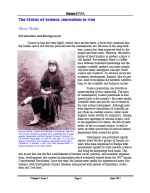







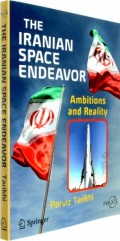
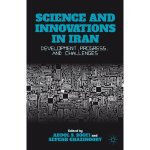






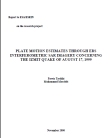
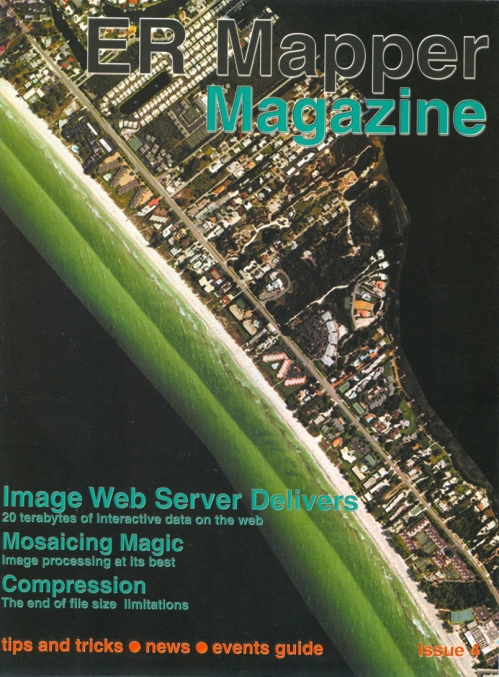


















































April 29, 2012 at 04:08
Please let me know if you’re looking for a writer for your weblog. You have some really great articles and I believe I would be a good asset. If you ever want to take some of the load off, I’d absolutely love to write some material for your blog in exchange for a link back to mine. Please shoot me an e-mail if interested. Kudos!
January 6, 2012 at 08:39
I’ve been surfing on-line greater than three hours today, yet I never discovered any attention-grabbing article like yours. It is pretty worth sufficient for me. Personally, if all web owners and bloggers made good content as you probably did, the internet shall be much more useful than ever before.
January 4, 2012 at 19:01
I have on the agenda c trick been browsing on-line greater than three hours lately, but I not discovered any attention-grabbing article like yours. It is enjoyable advantage enough for the sake of me. In my consider, if all website owners and bloggers made righteous load as you did, the internet inclination reasonable be a lot more usable than ever before. “I at the end of the day realized that being grateful to my body was level to giving more love to myself.” next to Oprah Winfrey.debt consolidation companies
December 24, 2011 at 23:05
Trackback Priority…
Fantastic website. A lot of useful info here. I am sending it to a few friends ans also sharing in delicious. And of course, thank you for your sweat!…
December 3, 2011 at 13:33
Completely missing the point…
I can not get it, but while I was reading this post I missed the golf tourney….
November 19, 2011 at 15:51
I like this web blog it’s a master piece! Glad I discovered this on google.
November 18, 2011 at 16:02
Just wanted to say that you have some awesome content on your website!
November 3, 2011 at 17:18
With everything which appears to be developing within this specific area, a significant percentage of viewpoints are quite exciting. On the other hand, I appologize, because I do not subscribe to your entire idea, all be it radical none the less. It looks to me that your opinions are generally not entirely validated and in actuality you are yourself not really completely certain of the argument. In any event I did take pleasure in examining it.
October 27, 2011 at 08:50
I love the design of your post. Obviously you have a very valid point, however I can’t get over how great the site design is.
October 18, 2011 at 06:17
Oh my goodness! an incredible article dude. Thanks Nonetheless I am experiencing issue with ur rss . Don抰 know why Unable to subscribe to it. Is there anybody getting an identical rss downside? Anyone who knows kindly respond. Thnkx
January 6, 2011 at 01:28
Hello. And Bye.
January 3, 2011 at 14:35
comment24, http://www.rc.umd.edu/cstahmer/cogsci/ order viagra professional, lpzd8, http://www.rc.umd.edu/ order viagra